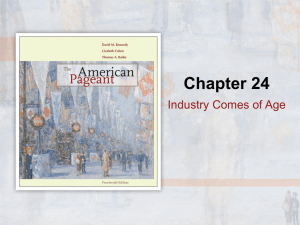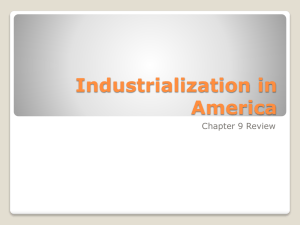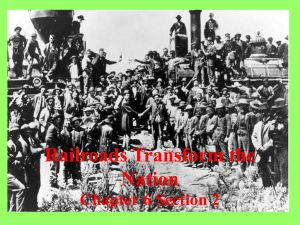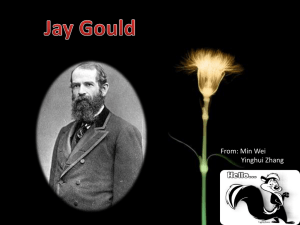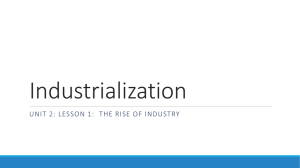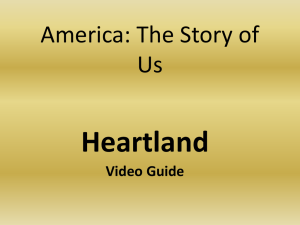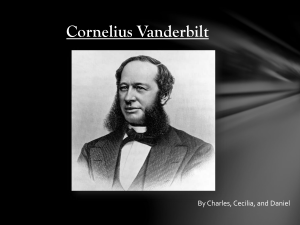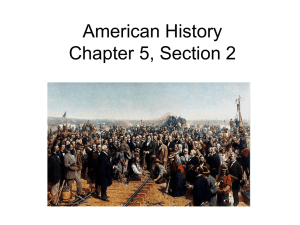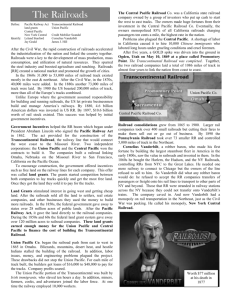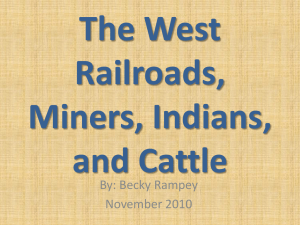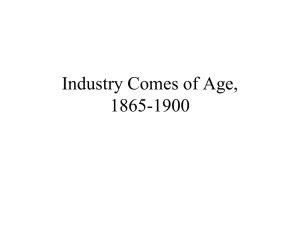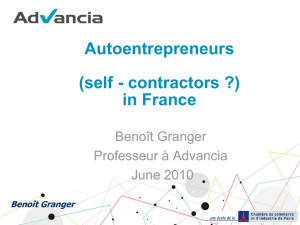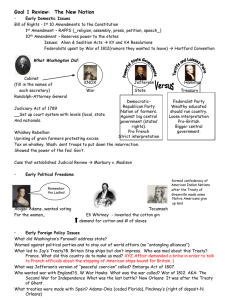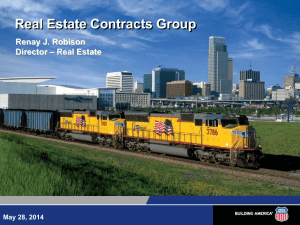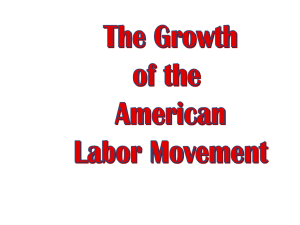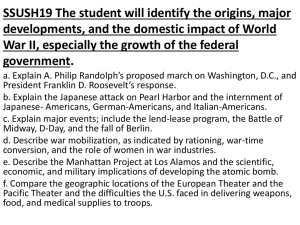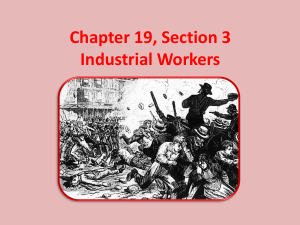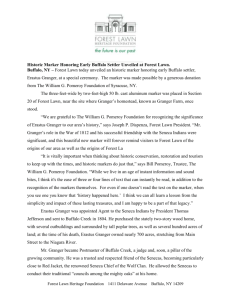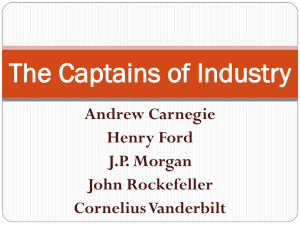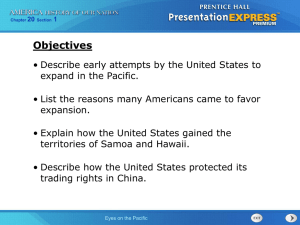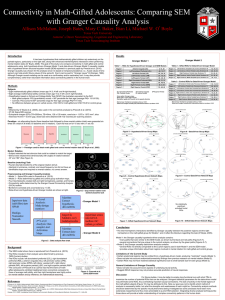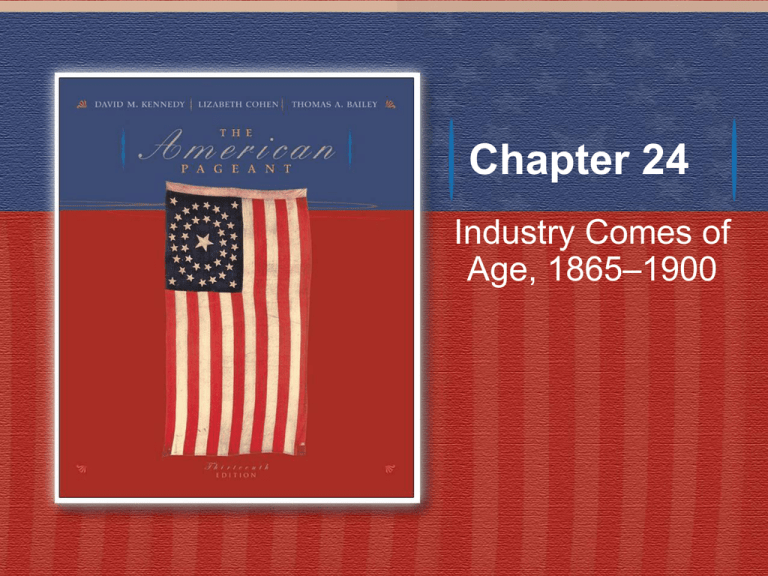
Chapter 24
Industry Comes of
Age, 1865–1900
Snow Sheds on the Central Pacific Railroad in the Sierra Nevada
Mountains, by Joseph H. Becker, c. 1869
Formidable obstacles of climate and terrain confronted the builders of the Central Pacific
Railroad in the mountainous heights of California. Note the Chinese laborers in the
foreground.
The Granger Collection
Promoting the Union Pacific
Railroad, 1869
The Union Pacific Railroad--note the
word “Union” --was commissioned by
Congress to thrust westward from
Omaha, Nebraska. The track grew at
breakneck speed funded by generous
land and monetary grants, with little
regard for either worker safety or the
Native Americans who often owned the
land the tracks came to cross.
Union Pacific Railroad Museum Collection
Grading for the Northern Pacific Railroad, 1879
This grading crew sliced a path through the Beaver Creek valley of western North Dakota
in what became known as the “Big Cut.” This first rail line to the Pacific Northwest
opened in 1883. Railroad trackage grew prodigiously in the 1880s, when an average of
more than seven thousand miles of new line was laid each year.
The Granger Collection
Cornelius Vanderbilt (1794–1877)
Vanderbilt established a shipping-land
transit line across Nicaragua in
response to the California gold rush. By
the time of his death, his New York
Central rail line ran from New York to
Chicago and operated along more than
forty-five hundred miles of track.
The Granger Collection
Traveling First Class
This sumptuously appointed Pullman
Palace Car offered its prosperous
passengers the comforts of home while
they were far away from it.
Hulton-Deutsch Collection/CORBIS
William H. Vanderbilt, Robber
Baron
This 1885 cartoon takes aim at
Vanderbilt’s notorious comment, “The
public be damned!”
Library of Congress
J. P. Morgan (1837–1913)
As the most influential banker of his day, he symbolized to many people the power and
arrogance of “finance capitalism.” The chronic skin disorder on his nose inspired the
taunt, “Johnny Morgan’s nasal organ has a purple hue.”
Library of Congress
Washington as Seen by the Trusts, 1900
“What a funny little government,” John D. Rockefeller observes in this satirical cartoon.
His own wealth and power are presumed to dwarf the resources of the federal
government.
Library of Congress
The Robber Barons of Today, 1889
This cartoon bitterly caricatures the alleged rapacity of the “Robber Barons.” Here an
intimidated people pay servile tribute to the lordly tycoons.
The Granger Collection
The New Rich and the New Immigrants
A well-to-do family plays chess at its parlor table (left), while a tenement family does
“piecework” around its kitchen table--shelling nuts for commercial use. The young working
girl seems to be “snitching” some nuts for herself. The apparently growing gulf between the
rich and the poor deeply worried reformers in the late nineteenth century. They feared that
democracy could not survive in the face of such gross inequality.
The Granger Collection/International Museum of Photography/ George Eastman House
A Virginia Tobacco Factory, c. 1880
The employment of women and children was a common practice in late-nineteenthcentury American industry, north as well as south.
Valentine Richmond History Center
Cotton Manufacturing Moves South, 1880–1980
Textile manufacturing usually looms large in the early stages of industrial development. In
the later stages, it gives way to higher-technology businesses. This trend can be seen
here, both in the migration of textile manufacturing to the southern United States and in
the decline in the number of spindles in the United States as a whole since the 1930s, as
developing Third World countries became major textile producers.
Copyright (c) Houghton Mifflin Company. All Rights Reserved.
American Industry in 1900
By the end of the nineteenth century, once-rural America boasted the world’s largest
industrial output--a development with enormous consequences for politics, diplomacy,
and family life.
Copyright (c) Houghton Mifflin Company. All Rights Reserved.
Breaker Boys at Woodward Coal
Mining, Kingston, Pennsylvania,
c. 1900
Photographer Lewis Hine captured the
grimness of these mine helpers’ lives.
For hours they sat on benches above a
moving belt kicking large pieces of coal
with their feet, breaking the lumps to
uniform size for shipment. Photographs
like this one became icons of the reform
crusade against child labor, a campaign
crowned with success only with the
passage of the Fair Labor Standards
Act in 1938.
Library of Congress
Assembly Line, Westinghouse Foundry, Pittsburgh, 1890
Technological innovations like this continuous assembly line created abundant
employment opportunities for semiskilled workers, many of them immigrants from
eastern and southern Europe.
© Bettmann/ CORBIS
The Strike, by Robert Koehler, 1886
Scenes like this were becoming more typical of American life in the late nineteenth century
as industrialism advanced spectacularly and sometimes ruthlessly. Here Koehler (18501917) shows an entire community of men, women, and children--many of them apparently
immigrant newcomers--challenging the power of the “boss.” The scene is tense but orderly,
though violence seems to be imminent as one striker reaches for a rock.
Deutsches Historisches Museum, Berlin, Germany/ AKG, London
Samuel Gompers (1850–1924)
Gompers (second from the right in the first row) shown here marching in a labor
demonstration in Washington, D.C., in 1919, once declared: “Show me the country in which
there are no strikes and I’ll show you that country in which there is no liberty.”
Brown Brothers
“Mother Jones”
Mary Harris Jones, better known as "Mother Jones," was a prominent figure in the urban
industrial workers movement.
The Granger Collection
Terence Powderly and the
Knights of Labor
Machinist Frank J. Ferrell, black
delegate of District Assembly No. 49,
introducing General Master Workman
Terence Powderly to the 10th Annual
Convention of the Knights of Labor,
held in Richmond, Virginia, 1886.
The Granger Collection
Women Delegates to the 1886 Convention of the Knights of Labor
As a fundamentally socialist workers' organization, the Knights of Labor embraced a
greater sense of class and social equality than did many of their contemporaries.
© Bettmann/ CORBIS

